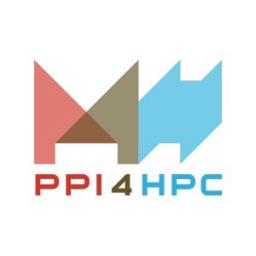 |
by staff on (#51SBE)
The Barcelona Supercomputing Center (BSC) will provide a new storage infrastructure for enhanced data analysis capabilities thanks to the PPI4HPC (Public Procurement of Innovations for High Performance Computing). "The proposed infrastructure includes a disk tier built on all-flash technology and spinning disk drives. It changes the way underlying physical drives are managed, accessed and rebuilt in case of failures in order to minimize the impact to the scientific applications. It is a High-Performance Analytics compute infrastructure to run data analytics operations with the latest Power microprocessors and NVMe PCIe local storage to accelerate the workloads."The post Barcelona Supercomputing Centre to Optimize Storage and Data Analysis with PPI4HPC appeared first on insideHPC.
|
 Inside HPC & AI News | High-Performance Computing & Artificial Intelligence
Inside HPC & AI News | High-Performance Computing & Artificial Intelligence
| Link | https://insidehpc.com/ |
| Feed | http://insidehpc.com/feed/ |
| Updated | 2025-11-07 04:15 |
 |
by staff on (#51SBG)
A task force of NVIDIA computer scientists has joined the COVID-19 High Performance Computing Consortium, which brings together leaders from the U.S. government, industry and academia to accelerate research using the world’s most powerful HPC resources. "The consortium’s objective is to accelerate development of effective methods to detect, contain and treat the coronavirus. It will support researchers by providing access to 30 supercomputers with over 400 petaflops of compute performance."The post NVIDIA Adds GPU and AI Expertise to COVID-19 HPC Consortium appeared first on insideHPC.
|
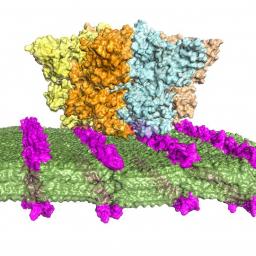 |
by staff on (#51S23)
A research team led by Berkeley Lab has developed a technique that could accelerate the design of artificial antibodies for biomedical applications – from sensing technologies that detect and neutralize infectious viruses and bacteria to the early detection of Alzheimer’s. "We can now readily build populations of rugged synthetic materials that can be engineered to recognize a potential pathogen,†said Zuckermann. “It is a shining example of biomimetic nanoscience.â€The post New Library of Artificial Antibodies Could Target Pathogens With Molecular Precision appeared first on insideHPC.
|
 |
by Rich Brueckner on (#51R3R)
In this video, Frank Ferro from Rambus examines the current performance bottlenecks in HPC, drilling down into power and performance for different memory options. "HBM2E offers the capability to achieve tremendous memory bandwidth. Four HBM2E stacks connected to a processor will deliver over 1.6 TB/s of bandwidth. And with 3D stacking of memory, high bandwidth and high capacity can be achieved in an exceptionally small footprint. Further, by keeping data rates relatively low, and the memory close to the processor, overall system power is kept low."The post Video: High-Performance Memory For AI And HPC appeared first on insideHPC.
|
 |
by staff on (#51R3T)
In this Roadhouse podcast, Dr. Greg Bowman from Folding @ Home describes the how crowdsourced computing is being used to fight the coronavirus and how we can get involved. "We are excited to announce a new batch of small molecule screening simulations are now up and running on Folding@home! These simulations will help prioritize which molecules will be synthesized and assayed by the COVID Moonshot aiming to rapidly developing new therapies against the SARS-CoV-2 main viral protease."The post Podcast: How crowd-sourced supercomputing is helping fight COVID-19 appeared first on insideHPC.
|
 |
by staff on (#51Q24)
"NERSC is a member of the COVID-19 High Performance Computing Consortium. In support of the Consortium, NERSC has reserved a portion of its Director’s Discretionary Reserve time on Cori, a Cray XC40 supercomputer, to support COVID-19 research efforts. The GPU partition on Cori was installed to help prepare applications for the arrival of Perlmutter, NERSC’s next-generation system that is scheduled to begin arriving later this year and will rely on GPUs for much of its computational power."The post NERSC Supercomputer to Help Fight Coronavirus appeared first on insideHPC.
|
 |
by Rich Brueckner on (#51Q26)
South Dakota State University Division of Technology and Security is offering an exciting career opportunity as a Research High Performance Computer Specialist. We are looking for a creative and innovative professional to join us in the engagement of university research faculty and their collaborators, graduate research assistants, and laboratory personnel to identify, develop and implement appropriate high-performance computing solutions (application/parallel computing/programming) to problems impeding their research/diagnostic work.The post Job of the Week: Research HPC Specialist at South Dakota State University appeared first on insideHPC.
|
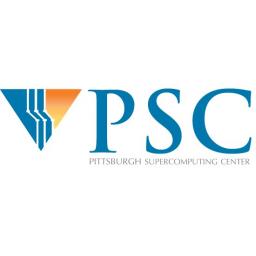 |
by staff on (#51NWE)
The Pittsburgh Supercomputing Center (PSC), a joint effort between Carnegie Mellon University and the University of Pittsburgh, has allotted computing time on its Bridges and Bridges-AI platforms for urgent COVID-19 computational research. These resources are available at no cost to scientists. "PSC is part of the COVID-19 HPC Consortium, which encompasses computing capabilities from some of the most powerful and advanced computers in the world. By contributing to this combined effort, the PSC aims to empower researchers around the world to accelerate understanding of the COVID-19 virus and the development of treatments and vaccines that will help to address infections and limit spread of the virus."The post Pittsburgh Supercomputing Center Resources Available for COVID-19 Research appeared first on insideHPC.
|
 |
by Rich Brueckner on (#51NWG)
Satellite Data analyzed by scientists from ICHEC (Irish Centre for High-End Computing) using European Space Agency Sentinel 5-P satellite data shows evidence of Nitrogen Dioxide (NO2) emissions in a number of rural areas during February and March 2020. "ICHEC released imagery today, April 3 in which the scientists observed general reductions in emissions (blue areas of the maps) from the lower levels of activity in the economy due to COVID-19 but also observed a few spikes (red areas) on some dates, most likely associated with fires in rural areas."The post ICHEC: Satellite Data Indicates Illegal Burning in Rural Areas of Ireland During COVID-19 Shutdown appeared first on insideHPC.
|
 |
by staff on (#51NWJ)
Today the Compute Express Link (CXL) Consortium and Gen-Z Consortium announced a Memorandum of Understanding (MOU) describing a mutual plan for collaboration between the two organizations. The agreement shows the commitment each organization is making to promote interoperability between the technologies, while leveraging and further developing complementary capabilities of each technology. "CXL technology and Gen-Z are gearing up to make big strides across the device connectivity ecosystem. Each technology brings different yet complementary interconnect capabilities required for high-speed communications,†said Jim Pappas, board chair, CXL Consortium. “We are looking forward to collaborating with the Gen-Z Consortium to enable great innovations for the Cloud and IT world.â€The post CXL and Gen-Z Consortiums to Collaborate appeared first on insideHPC.
|
 |
by Rich Brueckner on (#51NJ6)
William Beaudin from DDN gave this talk at GTC Digital. "Enabling high performance computing through the use of GPUs requires an incredible amount of IO to sustain application performance. We'll cover architectures that enable extremely scalable applications through the use of NVIDIA’s SuperPOD and DDN’s A3I systems. The groundbreaking performance delivered by the DGX SuperPOD enables the rapid training of deep learning models at great scale."The post HPC at Scale Enabled by DDN A3i and NVIDIA SuperPOD appeared first on insideHPC.
|
 |
by staff on (#51N77)
Scientists from Princeton Plasma Physics Laboratory are leading an Aurora ESP project that will leverage AI, deep learning, and exascale computing power to advance fusion energy research. "With a suite of the world’s most powerful path-to-exascale supercomputing resources at their disposal, William Tang and colleagues are developing models of disruption mitigation systems (DMS) to increase warning times and work toward eliminating major interruption of fusion reactions in the production of sustainable clean energy."The post Scientists Look to Exascale and Deep Learning for Developing Sustainable Fusion Energy appeared first on insideHPC.
|
 |
by staff on (#51KT6)
In this SpotlightON podcast, Robert Stober from Bright Computing is joined by Adnan Khaleel, Global Sales Strategist for HPC, AI and Deep Learning at Dell Technologies. Together, they discuss the subject of HPC as a service: What it means, how it is different from traditional HPC, and what the benefits are.The post Podcast: Taking a Look at HPC-as-a-Service appeared first on insideHPC.
|
 |
by staff on (#51M4E)
Over at the Altair Blog, CEO James Scapa writes that the company is offering free training tools and software licensing in response to COVID-19. "Altair can provide temporary software licenses for clients working from home without access to their enterprise Altair software solutions with no additional fees or charges. If customers wish to move their HyperWorks Units from on-premises to Altair hosted servers or require temporary software licenses, they should contact their account representative."The post Altair offers free training tools and software licensing in response to COVID-19 appeared first on insideHPC.
|
 |
by staff on (#51M4F)
BAnQ in Quebec is the newest member to join the iRODS Consortium. BAnQ is at once a national library and a national archives, the largest public library in the French-speaking world and a virtual library that is accessible worldwide. "Having iRODS in our preservation system allows us to manage replicas, retrieve data through metadata, increase security and check and repair data, along with other features that are important to support our staff and the functioning of our applications.â€The post BAnQ in Québec joins iRODS Consortium appeared first on insideHPC.
|
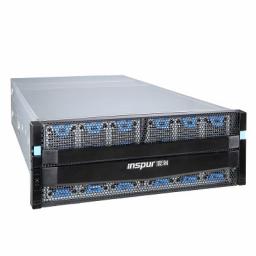 |
by Rich Brueckner on (#51KT2)
An Inspur storage system achieved world record performance and top two ranking in a recent SPC Benchmark 1 performance test. The SPC Benchmark 1 results are a valuable reference for the selection of storage systems for businesses critical applications like OLTP systems, databases systems, and server applications. "To achieve these results, the AS5600G2 adopted iTurbo acceleration engine technology from Inspur and used the four core algorithms of intelligent data path acceleration — intelligent multi-core scheduling, intelligent hot and cold data stream separation, and iMASP random to sequential transformation technology."The post Inspur Storage System achieves record performance on SPC Benchmark 1 appeared first on insideHPC.
|
 |
by Rich Brueckner on (#51KT4)
The DOE laboratory complex has many core capabilities that can be applied to addressing the threats posed by COVID-19. "This public-private partnership includes the biggest players in advanced computing from government, industry, and academia. At launch, the consortium includes five DOE laboratories, industry leaders like IBM, Microsoft, Google, and Amazon, and preeminent U.S. universities like MIT, RPI, and UC San Diego. And within a week, we’ve already received more than a dozen requests from other organizations to join the consortium."The post Interview: Under Secretary Paul Dabbar on the COVID-19 HPC Consortium appeared first on insideHPC.
|
 |
by Rich Brueckner on (#51JBR)
ThinkParQ will host the annual BeeGFS Virtual Community Meeting on World Bee Day, May 20, 2020. BeeGFS is a parallel cluster file system, developed with a strong focus on performance and designed for very easy installation and management. "Following the overwhelming success of our inaugural BeeGFS Virtual Community Meeting that took place last October, the team is excited with the content we are preparing to share with the community, and we are currently finalizing talks with innovative BeeGFS users who will present alongside us in May,†says Frank Herold, CEO, ThinkParQ.The post Registration Opens for BeeGFS Virtual Community Meeting appeared first on insideHPC.
|
 |
by Rich Brueckner on (#51JBT)
Today IBM announced that anyone in the world with a PC, laptop or Mac and an Internet connection could help scientists seek chemical compounds that might be effective against COVID-19. "The project, designed and led by Scripps Research, will be hosted on IBM's World Community Grid. Volunteers download an app that works when their devices are otherwise idle or in light use. Operating unobtrusively in the background without slowing users' systems, the app distributes computational assignments and returns completed calculations to researchers, all via the IBM cloud."The post How Your Computer Can Help Scientists Fight COVID-19 appeared first on insideHPC.
|
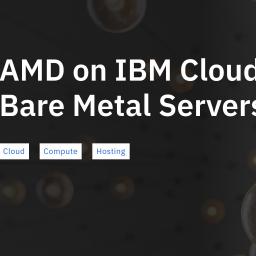 |
by Rich Brueckner on (#51J1H)
Today, AMD announced that IBM Cloud is enhancing its global infrastructure with 2nd Gen AMD EPYC processors to power its latest bare metal servers. Available now, these new bare metal servers are the first 2nd Gen AMD EPYC based offering from IBM Cloud and are focused on the computing power and performance required to accelerate modern workloads like data analytics, electronic design automation, artificial intelligence and virtualized and containerized workloads.The post 2nd Gen AMD EPYC Processors Power New IBM Cloud Bare Metal Servers appeared first on insideHPC.
|
 |
by Rich Brueckner on (#51J1K)
"There’s a new programming language in town. Called Data Parallel C++ (DPC++), it allows developers to reuse code across diverse hardware targets—CPUs and accelerators—and perform custom tuning for a specific accelerator. DPC++ is part of oneAPI—an Intel-led initiative to create a unified programming model for cross-architecture development. Based on familiar C++ and SYCL, DPC++ is an open alternative to single-architecture proprietary approaches and helps developers create solutions that better meet specialized workload requirements."The post Breaking Boundaries with Data Parallel C++ appeared first on insideHPC.
|
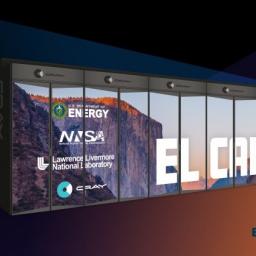 |
by Rich Brueckner on (#51HPP)
In this podcast, the Radio Free HPC team looks at some of the more interesting configuration aspects of the pending El Capitan exascale supercomputer coming to LLNL in 2023. "Dan talks about the briefing he received on the new Lawrence Livermore El Capitan system to be built by HPE/Cray. This new $600 million system will be fueled by the AMD Genoa processor coupled with AMD’s Instinct GPUs. Performance should come in at TWO 64-bit exaflops peak, which is very, very sporty."The post Podcast: A Look inside the El Capitan Supercomputer coming to LLNL appeared first on insideHPC.
|
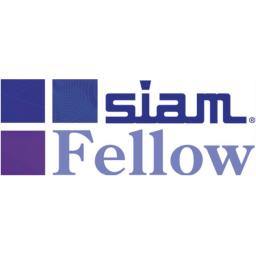 |
by Rich Brueckner on (#51GKB)
Today the Society for Industrial and Applied Mathematics (SIAM) announced the 2020 Class of SIAM Fellows. These distinguished members were nominated for their exemplary research as well as outstanding service to the community. Through their contributions, SIAM Fellows help advance the fields of applied mathematics and computational science. The goals of the SIAM Fellowship program […]The post SIAM Announces Class of 2020 Fellows appeared first on insideHPC.
|
 |
by Rich Brueckner on (#51G8Y)
Gunter Roeth from NVIDIA gave this talk at ML4HPC 2020. "The growing adoption of NVIDIA Volta GPU by the Top500 Supercomputers highlights the need of computing acceleration for this HPC & AI convergence. Many projects today demonstrate the benefit of AI for HPC, in terms of accuracy and time to solution, in many domains such as Computational Mechanics, Earth Sciences, Life Sciences, Computational Chemistry, and Computational Physics. NVIDIA today for instance, uses Physics Informed Neural Networks for the heat sink design in our DGX system."The post Video: NVIDIA to Accelerate the HPC-AI Convergence appeared first on insideHPC.
|
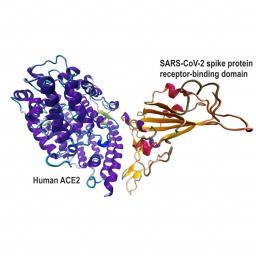 |
by Rich Brueckner on (#51GKD)
An international research team of scientists – from Russia, Finland, Italy, China, Japan and Canada is using a recently upgraded HPC system at the Joint Supercomputer Center of the Russian Academy of Sciences to develop diagnostics and treatment against COVID-19 coronavirus infection that became the cause of global pandemic. "We aim to use molecular simulation to create a computer model of a medical drug with selective interaction with receptor-binding domain of Spike protein of SARS-CoV-2 coronavirus strain."The post Russian Supercomputer Joins the Fight Against COVID-19 appeared first on insideHPC.
|
 |
by staff on (#51G8W)
Researchers are using supercomputers to model how contagions can spread onboard aircraft. Using Frontera's GPU subsystem, the researchers were able to get the computation time down to 1.5 minutes. "Using the GPUs turned out to be a fortunate choice because we were able to deploy these simulations in the COVID-19 emergency. The GPUs on Frontera are a means of generating answers fast."The post Supercomputing the Spread of Contagions on Airplanes appeared first on insideHPC.
|
 |
by Rich Brueckner on (#51G8Z)
Today D-Wave Systems announced the immediate availability of free access to its quantum systems via the Leap quantum cloud service for anyone working on responses to the COVID-19 crisis. "It is promising to accelerate the solution of complex problems in pharmacology and epidemiology, such as those that have arisen in the unprecedented COVID-19 crisis, by means of hybrid workflows from quantum-classical computer simulations."The post D-Wave Offers Free Quantum Cloud Access for Global Response to COVID-19 appeared first on insideHPC.
|
 |
by Rich Brueckner on (#51EXB)
Registration is now open for the Stanford HPC Conference. The two day 'condensed' agenda combines thought leadership and practical insights on HPC, AI, Data Science and much more. The virtual event takes place April 21-22. "The Stanford High Performance Computing Center in collaboration with the HPC-AI Advisory Council invite you to join the annual Stanford Conference as an entirely virtual experience."The post Registration Opens for Stanford HPC Conference Virtual Event appeared first on insideHPC.
|
 |
by staff on (#51EKS)
Today Lifebit Biotech announced it is providing its premium Lifebit CloudOS license free to all researchers and teams working on COVID-19 efforts, including diagnostics, treatments, and vaccines. As increasing demand for widely accessible reference data and massive data sharing has never been more apparent, this initiative provides researchers with a seamless way to perform their analyses securely, while enabling teams to freely collaborate even when working from home.The post Lifebit Provides Free Cloud, Data Hosting & Analysis Tools to COVID-19 Researchers appeared first on insideHPC.
|
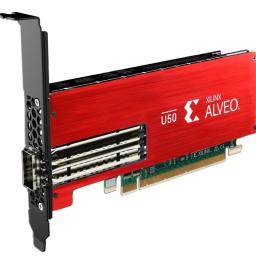 |
by Rich Brueckner on (#51EKT)
Today Nimbix announced the availability of Xilinx Alveo U50 Accelerator Cards on the Nimbix Cloud. "Nimbix has paved the way for FPGA-accelerated cloud computing and today leads with the broadest portfolio of cloud FPGA solutions in the industry,†said Steve Hebert, CEO of Nimbix. “The availability of U50 accelerators in the Nimbix Cloud and JARVICE XE are helping ISVs and developers bring new applications and solutions to market in the cloud.â€The post Xilinx Alveo U50 Accelerator Cards come to Nimbix Cloud with Broad Application Support appeared first on insideHPC.
|
 |
by Rich Brueckner on (#51EKW)
NCSA is joining C3.ai, Microsoft Corporation, and research institutions across the country as part of the new C3.ai Digital Transformation Institute (C3.ai DTI). This new institute, a multi-disciplinary effort focused on artificial intelligence and advanced computing, will initially accept proposals related to the abatement of COVID-19, and mitigating risks from future pandemics using AI. "This new institute will greatly expand the use of computing and data to improve the world, starting with bringing together a consortium of leading institutions to address the COVID-19 crisis."The post NCSA Joins Nationwide Collaboration to Combat COVID-19 appeared first on insideHPC.
|
 |
by staff on (#51E9W)
UKRI has awarded contracts to run elements of the next national supercomputer, ARCHER2, which will represent a significant step forward in capability for the UK’s science community. ARCHER2 is provided by UKRI, EPCC, Cray (an HPE company) and the University of Edinburgh. "ARCHER2 will be a Cray Shasta system with an estimated peak performance of 28 PFLOP/s. The machine will have 5,848 compute nodes, each with dual AMD EPYC Zen2 (Rome) 64 core CPUs at 2.2GHz, giving 748,544 cores in total and 1.57 PBytes of total system memory."The post UKRI Awards ARCHER2 Supercomputer Services Contract appeared first on insideHPC.
|
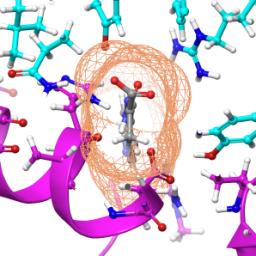 |
by staff on (#51DNX)
In this segment from the NPR Here and Now program, Joe Palca talks to researchers using ORNL supercomputers to fight COVID-19. "Supercomputers have joined the race to find a drug that might help with COVID-19. Scientists are using computational techniques to see if any drugs already on the shelf might be effective against the disease. The two researchers performed simulations on Summit of more than 8,000 compounds to screen for those that are most likely to bind to the main “spike†protein of the coronavirus, rendering it unable to infect host cells."The post NPR Podcast: Scientists Use Supercomputers To Search For Drugs To Combat COVID-19 appeared first on insideHPC.
|
 |
by staff on (#51DGT)
Shahin Khan from OrionX.net gave this talk at the Washington Quantum Computing Meetup. "A whole new approach to computing (as in, not binary any more), quantum computing is as promising as it is unproven. Quantum computing goes beyond Moore’s law since every quantum bit (qubit) doubles the computational power, similar to the famous wheat and chessboard problem. So the payoff is huge, even though it is, for now, expensive, unproven, and difficult to use. But new players will become more visible, early use cases and gaps will become better defined, new use cases will be identified, and a short stack will emerge to ease programming."The post Video: Quantum Computing and Supercomputing, AI, Blockchain appeared first on insideHPC.
|
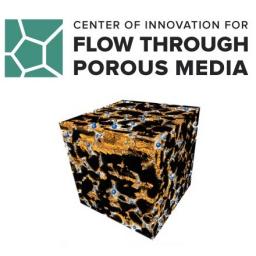 |
by Rich Brueckner on (#51CEP)
The Center of Innovation for Flow through Porous media (COIFPM) at the University of Wyoming has multiple openings for highly motivated research scientists to join its computational research branch. The focus of the modeling team is to develop advanced computational tools to simulate multiphase flow and transport in porous materials. To this end, we utilize high-performance computing techniques to build innovative and highly parallelized computer platforms that are tested on powerful supercomputers and validated against experimental data.The post Job of the Week: Research Scientist at the University of Wyoming appeared first on insideHPC.
|
 |
by staff on (#51BNR)
Intersect360 Research has released a new report guiding its clients that the market for HPC products and services will fall significantly short of its previous 2020 forecast, due to the global COVID-19 pandemic. The newly-revised forecast predicts the overall worldwide HPC market will be flat to down 12% in 2020. "Intersect360 Research had previously forecast the HPC market would grow 7.0% in 2020, year-over-year from 2019. This projected shortfall essentially wipes out that growth. This would end a streak of ten straight growth years for the HPC market."The post Intersect360 Research Lowers 2020 HPC Market Forecast for COVID-19 appeared first on insideHPC.
|
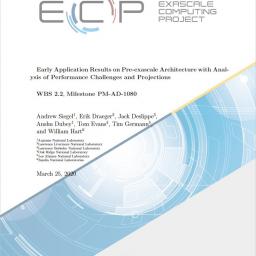 |
by Rich Brueckner on (#51BAT)
The US Department of Energy’s Exascale Computing Project (ECP) has published a milestone report that summarizes the status of all thirty ECP Application Development (AD) subprojects at the end of fiscal year 2019. "This report contains not only an accurate snapshot of each subproject’s current status but also represents an unprecedentedly broad account of experiences porting large scientific applications to next-generation high-performance computing architectures."The post Exascale Computing Project Releases Milestone Report appeared first on insideHPC.
|
 |
by staff on (#51BAW)
Today WekaIO announced that The Business Intelligence Group has named Weka a winner in its Artificial Intelligence Excellence Awards program. “the WekaFS file system can deliver 80 GB/sec of bandwidth to a single GPU server, scale to Exabytes in a single namespace, and support an entire pipeline for edge-to-core-to-cloud workflows. The system also delivers operational agility with versioning, explainability, and reproducibility along with governance and compliance with in-line encryption and data protection."The post WekaIO Receives Artificial Intelligence Excellence Award appeared first on insideHPC.
|
 |
by Rich Brueckner on (#51BAY)
Today Intel introduced the oneAPI DevCloud to make it easier and more productive for coders currently working from home. "Developing code at home requires access to compute cycles, the latest software development tools, access across diverse hardware architectures—CPUs, GPUs, and FPGAs, and expanded storage capabilities. Through the new oneAPI DevCloud, Intel aims to provide extended access, capacity and support for oneAPI developers working from home."The post New Intel oneAPI DevCloud makes it easier for coders working from home appeared first on insideHPC.
|
 |
by staff on (#51BAZ)
In this special guest feature, Wolfgang Gentzsch from the UberCloud describes how engineers can perform work from home in the same way they do at their offices, while maintaining or even increasing productivity. "In our short post, here, we are looking at how product development engineers – e.g. in manufacturing – are able to perform the same work they are used to perform at their office, maintaining (or even increasing) their productivity while working from home."The post Manufacturing Engineers can turn to Cloud HPC for Work from Home appeared first on insideHPC.
|
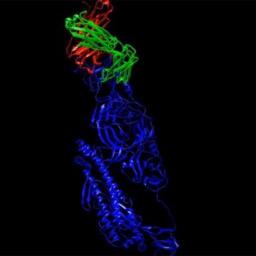 |
by staff on (#51B0X)
Backed by five high performance computing (HPC) clusters and years of expertise in vaccine and countermeasure development, a COVID-19 response team of LLNL researchers from various disciplines has used modeling & simulation, along with machine learning, to identify about 20 initial, yet promising, antibody designs from a nearly infinite set of potentials and to examine millions of small molecules that could have anti-viral properties. The candidates will need to be synthesized and experimentally tested — which Lab researchers cautioned could take time — but progress is being made.The post LLNL Researchers aid COVID-19 response in anti-viral research appeared first on insideHPC.
|
 |
by staff on (#519JJ)
Today Rigetti Computing announced the company has been awarded up to $8.6 million from DARPA to develop a full-stack system with proven quantum advantage for solving real world problems. “We believe strongly in an integrated hardware and software approach, which is why we’re bringing together the scalable Rigetti chip architecture with the algorithm design and optimization techniques pioneered by the NASA-USRA team.â€The post DARPA Grant to Foster Practical Quantum Computing with Rigetti appeared first on insideHPC.
|
 |
by Rich Brueckner on (#5197S)
In this special guest feature, Dave Frattura from Dell Technologies writes that the company is helping customers simplify and drive data science and AI initiatives that can deliver valuable insights, automation and intelligence to fuel innovation across their IT landscape — from edge locations to core data center and public clouds. "Dell has developed new solutions to help data scientists and developers get their AI applications and projects up and running without delay."The post New AI Solutions from Dell Technologies appeared first on insideHPC.
|
 |
by staff on (#5197V)
In this special guest feature, our friends over at Inspur write that for new workloads that are highly compute intensive, accelerators are often required. Accelerators can speed up the computation and allow for AI and ML algorithms to be used in real time. Inspur is a leading supplier of solutions for HPC and AI/ML workloads.The post Fast Track your AI Workflows appeared first on insideHPC.
|
 |
by staff on (#518X8)
The UK government has backed their leading clinicians and scientists this week with new resources to map how COVID-19 spreads and evolves using whole-genome sequencing. Through a £20 million investment, the consortium will look for breakthroughs that help the UK respond to this and future pandemics, and save lives. "The government’s investment is well-timed to accelerate the pace of viral genome sequence production and ensure this information is openly available to epidemiologists and virologists worldwide. This will provide an unprecedented real-time view of COVID-19 virus evolution.â€The post University of Birmingham joins COVID-19 Genomics UK Consortium appeared first on insideHPC.
|
 |
by staff on (#518EP)
Researchers from Intel and Ayar Labs working on PIPES have successfully replaced the traditional electrical input/output (I/O) of a state-of-the-art field programmable gate array (FPGA) with efficient optical signaling interfaces. The demonstration leverages an optical interface developed by Ayar Labs called TeraPHY, an optical I/O chiplet that replaces electrical serializer/deserializer (SERDES) chiplets. "FPGAs with photonic interfaces will have broad impact, improving high-performance computing, artificial intelligence, large-scale emulation, and DoD-specific capabilities such as advanced radars."The post Ayar Labs, DARPA and Intel Replace Electronic I/O with Efficient Optical Signaling appeared first on insideHPC.
|
 |
by Rich Brueckner on (#517X1)
Student teams are encouraged to apply for the 2020 APAC HPC-AI Competition. Continuing the success of the previous competitions, student teams will square off against international teams to produce solutions and applications in the High-Performance Computing and Artificial Intelligence domains. "We hope that the HPC-AI training established among our young aspiring programmers can help us tackle global threats such as COVID-19 and accelerate an improved response to future pandemics."The post Student Teams Encouraged to Join the 3rd APAC HPC-AI Competition appeared first on insideHPC.
|
 |
by staff on (#517HW)
A new whitepaper from NEC X delves into the world of unstructured data and explores how vector processors and their optimization software can help solve the challenges of wrangling the ever-growing volumes of data generated globally. "In short, vector processing with SX-Aurora TSUBASA will play a key role in changing the way big data is handled while stripping away the barriers to achieving even higher performance in the future."The post The Role of Middleware in Optimizing Vector Processing appeared first on insideHPC.
|
 |
by Rich Brueckner on (#517HR)
Scientists are preparing a massive computer model of the coronavirus that they expect will give insight into how it infects in the body. They've taken the first steps, testing the first parts of the model and optimizing code on the Frontera supercomputer at the Texas Advanced Computing Center of UT Austin. The knowledge gained from the full model can help researchers design new drugs and vaccines to combat the coronavirus.The post Podcast: Supercomputing the Coronavirus on Frontera appeared first on insideHPC.
|
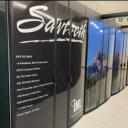 |
by Rich Brueckner on (#517HT)
In this video, technicians install the Sawtooth supercomputer at Idaho National Laboratory. "Named after a central Idaho mountain range, Sawtooth arrived in December and will be available to users soon. The $19.2 million system ranks #37 on the 2019 Top500 fastest supercomputers in the world. That is the highest ranking reached by an INL supercomputer. Of 102 new systems added to the list in the past six months, only three were faster than Sawtooth."The post Timelapse Video: Sawtooth Supercomputer Assembly appeared first on insideHPC.
|